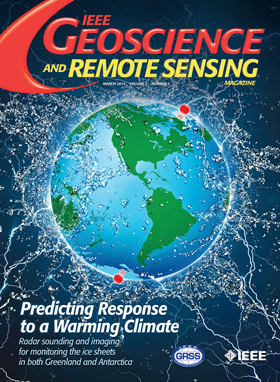AI Security for Geoscience and Remote Sensing: Challenges and future trends
IF 16.2
1区 地球科学
Q1 GEOCHEMISTRY & GEOPHYSICS
引用次数: 9
Abstract
Recent advances in artificial intelligence (AI) have significantly intensified research in the geoscience and remote sensing (RS) field. AI algorithms, especially deep learning-based ones, have been developed and applied widely to RS data analysis. The successful application of AI covers almost all aspects of Earth-observation (EO) missions, from low-level vision tasks like superresolution, denoising, and inpainting, to high-level vision tasks like scene classification, object detection, and semantic segmentation. Although AI techniques enable researchers to observe and understand the earth more accurately, the vulnerability and uncertainty of AI models deserve further attention, considering that many geoscience and RS tasks are highly safety critical. This article reviews the current development of AI security in the geoscience and RS field, covering the following five important aspects: adversarial attack, backdoor attack, federated learning (FL), uncertainty, and explainability. Moreover, the potential opportunities and trends are discussed to provide insights for future research. To the best of the authors’ knowledge, this article is the first attempt to provide a systematic review of AI security-related research in the geoscience and RS community. Available code and datasets are also listed in the article to move this vibrant field of research forward.地球科学和遥感的人工智能安全:挑战和未来趋势
人工智能(AI)的最新进展显著加强了地球科学和遥感(RS)领域的研究。人工智能算法,特别是基于深度学习的算法,已经被开发并广泛应用于RS数据分析。人工智能的成功应用几乎涵盖了地球观测(EO)任务的所有方面,从超分辨率、去噪和修复等低级视觉任务,到场景分类、物体检测和语义分割等高级视觉任务。尽管人工智能技术使研究人员能够更准确地观察和了解地球,但考虑到许多地球科学和遥感任务都具有高度的安全性,人工智能模型的脆弱性和不确定性值得进一步关注。本文综述了人工智能安全在地球科学和遥感领域的发展,涵盖了以下五个重要方面:对抗性攻击、后门攻击、联合学习(FL)、不确定性和可解释性。此外,还讨论了潜在的机会和趋势,为未来的研究提供了见解。据作者所知,本文首次尝试对地球科学和遥感界的人工智能安全相关研究进行系统综述。文章中还列出了可用的代码和数据集,以推动这一充满活力的研究领域向前发展。
本文章由计算机程序翻译,如有差异,请以英文原文为准。
求助全文
约1分钟内获得全文
求助全文
来源期刊

IEEE Geoscience and Remote Sensing Magazine
Computer Science-General Computer Science
CiteScore
20.50
自引率
2.70%
发文量
58
期刊介绍:
The IEEE Geoscience and Remote Sensing Magazine (GRSM) serves as an informative platform, keeping readers abreast of activities within the IEEE GRS Society, its technical committees, and chapters. In addition to updating readers on society-related news, GRSM plays a crucial role in educating and informing its audience through various channels. These include:Technical Papers,International Remote Sensing Activities,Contributions on Education Activities,Industrial and University Profiles,Conference News,Book Reviews,Calendar of Important Events.
 求助内容:
求助内容: 应助结果提醒方式:
应助结果提醒方式:


